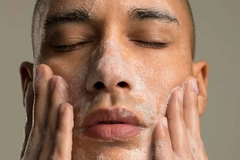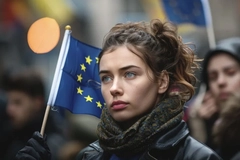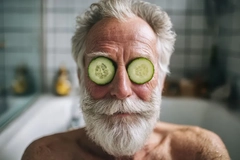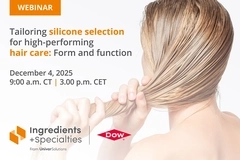Increased baby boomer spending exposes beauty’s innovation gap
Key takeaways
- Older consumers are investing in “self-pleasure” beauty purchases, rather than just products that meet basic needs.
- L’Oréal states that the market has not kept pace with the needs of older consumers, particularly in formulas, packaging, and services.
- Increased attention to age-specific needs is accelerating demand for targeted beauty and wellness solutions.
Mature consumers are shifting their spending habits from basic needs to beauty products and services that enhance their quality of life, yet L’Oréal says the cosmetics market is lagging behind. The beauty giant flags that this has created a gap for a generation that is eager — and able — to spend.
The shift in spending among baby boomers, commonly referred to as “boomers” online, is prompting major players like L’Oréal to reassess their approach to longevity, scientific skin health, and age-inclusive beauty, as demand from older consumers increases.
The French beauty company has highlighted this change through its “Beauty of Longevity” concept, launched in China, which frames beauty as relevant across the entire lifespan.
L’Oréal says mature individuals are moving from “passive selection” to “active self-pleasure.” The shift is reshaping the global silver economy, where older consumers are becoming an increasingly important growth engine for industries addressing wellness, confidence, and self-care.
According to L’Oreal, there’s been a noticeable “phenomenon” of sold-out university makeup classes for seniors, more mature members in community beauty salons, and senior beauty-sharing groups. The company cites these as indications of the rising interest in beauty among older consumers.
According to a 2025 report by Bank of America Institute, boomers’ spending at beauty salons increased by 4% year-over-year (YoY) in December 2024, 3% higher than any other generation. It also found that boomers’ spending at specialty beauty stores rose by 7% YoY in December 2024, outpacing all other generations by over 5%.
According to L’Oréal, the beauty market has not kept up.
“The supply side of the market still lags in product development addressing core mature skin concerns, adaptive packaging design, and service scenarios, urgently requiring innovative forces to fill these gaps,” the company says.
.webp) Older consumers are increasingly spending on beauty and wellness experiences.Silver economy shifts
Older consumers are increasingly spending on beauty and wellness experiences.Silver economy shifts
Mature consumers’ more active role in beauty is reshaping how they approach wellness, routines, and expectations for product performance. Bank of America’s report shows that while boomers are increasing their spending in beauty categories, they still spend less per household on self-care overall than Gen X and millennials.
Analysts say this lower baseline, combined with their rising interest, suggests that baby boomers still have room to grow their engagement in beauty and well-being services.
The Bank of America Institute also notes that boomers’ financial confidence sets them apart.
The survey found that 52% of boomers say they have enough disposable income for self-care, nearly twice the share of Gen Z. This indicates more financial room to purchase for pleasure rather than purpose.
The pattern aligns with L’Oréal’s observation that beauty for mature consumers is shifting from maintenance to motivation. Products are now chosen for their identity, enjoyment, and lifestyle value rather than pure functionality.
Beyond consumer behavior, L’Oréal frames the silver economy as a wider social transformation. The company’s “Beauty of Longevity” model links mature beauty demand with cultural attitudes toward aging. L’Oréal argues that society is beginning to value aging as a stage with its own aesthetics, needs, and opportunities.
Lan Zhenzhen, president of public affairs for L’Oréal North Asia and China, describes longevity as an ecosystem that is influenced by personal journeys and wider cultural developments. “Scientific health forms its roots… and socioeconomic factors are its lush foliage,” she says.
This cultural shift has implications beyond cosmetics. The rise of older, wellness-oriented consumers is influencing adjacent markets, including spas and dermatology clinics, fitness, and nutrition. According to the Bank of America Institute, boomers increased their fitness-related spending by 1% YoY.
Growing attention to menopause-related needs also illustrates this shift. More personal care and wellness providers are beginning to explore solutions that target hormonal and skin changes, mood, and intimate comfort — pain points that have traditionally been dismissed.
.webp) Mature adults are taking part in a wider range of beauty and self-care activities.Closing the innovation gap
Mature adults are taking part in a wider range of beauty and self-care activities.Closing the innovation gap
L’Oréal’s “Beauty of Longevity” strategy aims to address shifting spending habits among mature consumers. The strategy reframes aging as a lifelong beauty journey supported by science, culture, and social insight.
The company positions the concept as a shift away from narrow anti-aging ideals toward solutions that address the broader physical, emotional, and lifestyle needs of mature consumers.
The strategy combines longevity science, advanced diagnostics, and age-inclusive design to better serve older users whose routines now focus on well-being and self-expression.
L’Oréal aims to close long-standing gaps in formula performance, packaging accessibility, and service experiences by centering mature consumers as “core users.”
According to Yong Deming, VP of research and innovation for L’Oréal North Asia and China, L’Oréal’s integrated skin longevity science moves “from symptom improvement to root cause intervention.”
New diagnostic tools allow for more precise analysis of mature skin. The Lancôme “Core” Skin Decoder, for example, uses microfluidic chips to measure longevity biomarkers in minutes. This gives consumers insights into their skin’s biological age.
L’Oréal says this type of technology enables more personalized routines that reflect the complexity of mature skin rather than treating aging as a single concern.
The “Beauty of Longevity” strategy also involves expanding collaborations with external partners in the field of longevity science. L’Oréal describes this as an “open co-creation” model. The model leverages academic research, biotechnology advancements, and cross-industry expertise to expedite the development of new ingredients.
Addressing the innovation gap also means rethinking packaging and service delivery. L’Oréal says mature consumers need packaging that is easier to grip, open, and read. Moreover, service experiences must reflect older consumers’ comfort levels, mobility needs, and skin behavior.
Culturally, L’Oréal is also working to shift perceptions of beauty and aging through messaging that highlights individuality rather than idealized youth.
“Age is just a number, and living with time is an art,” Zhenzhen concludes.














